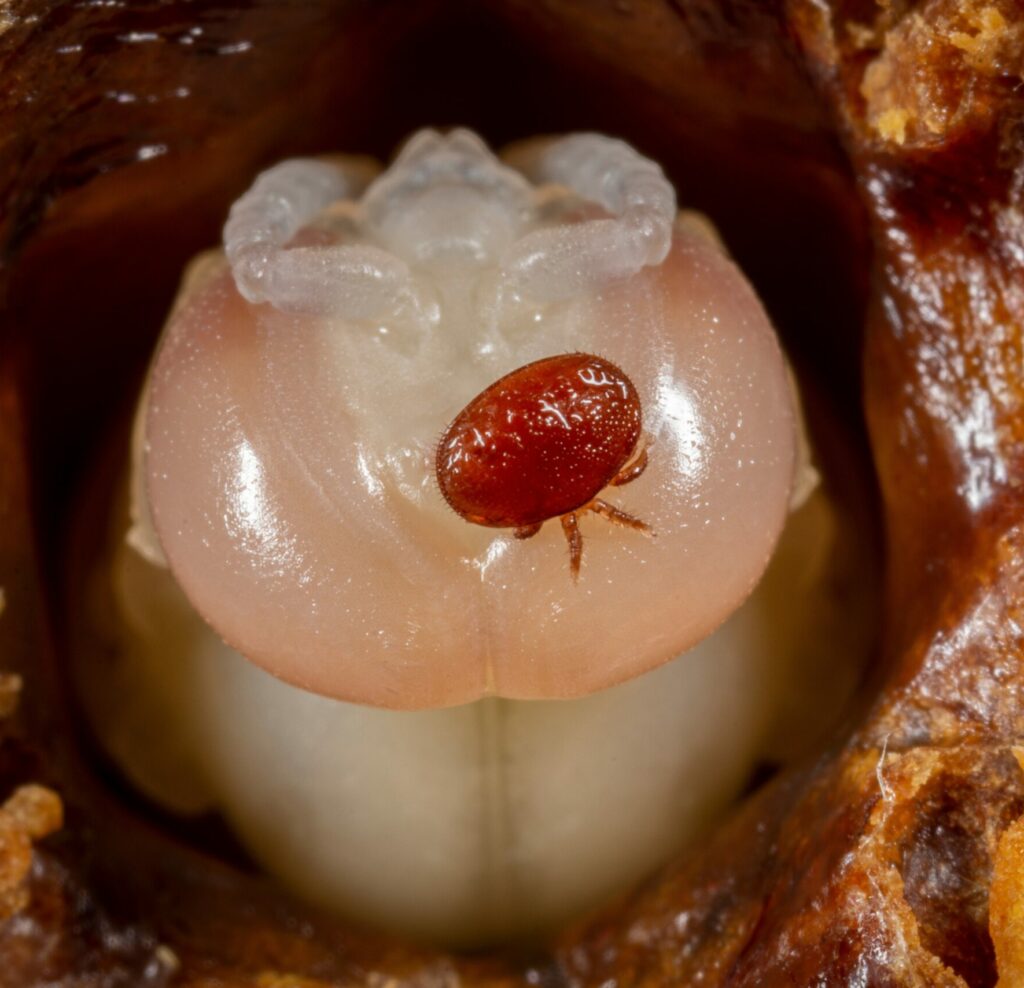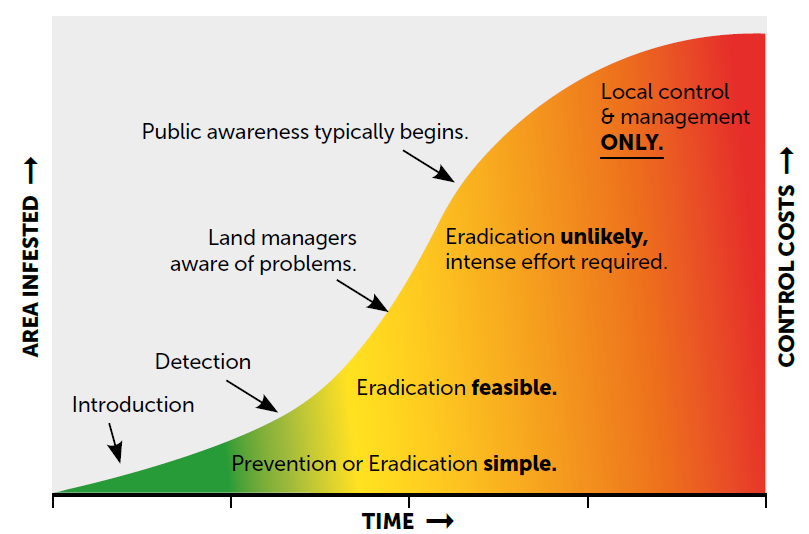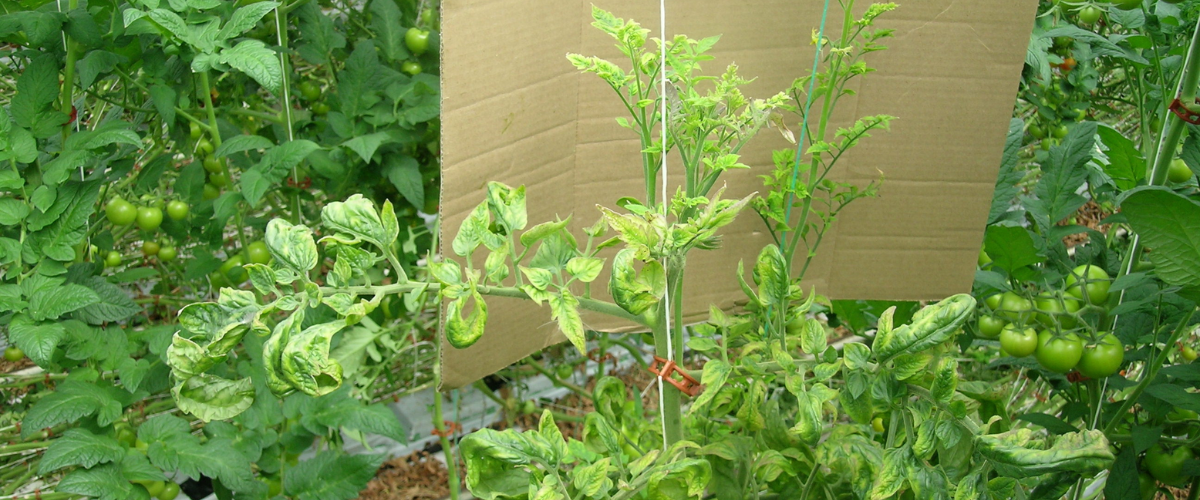Export market factsheets: optimising trade in the Australian vegetable industry
9 May 2025Fact Sheet: Soilborne diseases in onions
22 May 2025 As a vegetable grower, or agronomist, it is likely that you have often been encouraged to ‘report anything unusual’ to the Exotic Plant Pest Hotline 1800 084 881. While the reluctance to report a new suspected exotic plant pest is understandable, reporting earlier may offer a greater chance of preventing a small, localised pest issue from becoming an industry wide problem. But what actually happens when a new pest is reported and confirmed? This article aims to explain the Australian biosecurity system and what it means for growers, particularly when a new pest is found.
As a vegetable grower, or agronomist, it is likely that you have often been encouraged to ‘report anything unusual’ to the Exotic Plant Pest Hotline 1800 084 881. While the reluctance to report a new suspected exotic plant pest is understandable, reporting earlier may offer a greater chance of preventing a small, localised pest issue from becoming an industry wide problem. But what actually happens when a new pest is reported and confirmed? This article aims to explain the Australian biosecurity system and what it means for growers, particularly when a new pest is found.
Key points:
- Emergency responses, although run by the ‘host state’, are national and decision-making needs to consider both national and regional interests.
- AUSVEG is a signatory to the EPPRD and represents the vegetable, potato and onion industries during incursion responses.
- The site at which an exotic plant pest is found may be quarantined while activities are undertaken to establish how widespread the pest is.
- The CCEPP and NMG are responsible for making decisions about the response activities and costs.
- Response costs are shared between industry and government, depending on the impact of the pest on private and public sectors.
- Owner reimbursement costs are available to growers affected by response activities.
- Accurate record keeping is essential for claiming owner reimbursement costs.
- Having good biosecurity practices in place reduces the risk of a new pest coming onto your property.
Just like when you are monitoring your crop for pests and diseases, if you suspect a new pest, collect as much information as you can about what you have seen, including:
- What you found (e.g. wilting symptoms on the leaves of the crop)
- When you found it (e.g. 9.00am this morning)
- Where you found it (e.g. in the paddock by the dam)
- What crop it was on (e.g. capsicum)
- How many you saw, or how it has impacted the crop (describe the symptoms; e.g. the leaves are turning yellow and brown; I pulled up the roots and found them to be brown and stunted)
- Anything else that catches your attention (e.g. there were more aphids than usual).
Invasion Curve

Figure 1. The invasion curve shows what happens to a generalised pest population over time, after the introduction and establishment of a new pest into a new environment. ©Southwest Montana Science Partnership.
I’ve reported a pest that I have never seen before – what happens next?
When you call the Exotic Plant Pest Hotline (1800 084 881), your call is directed to the state or territory biosecurity agency for your region. You may be asked to send in photos or a sample, or biosecurity staff may ask to visit your property where the pest was found. All reports are investigated because it is better to have a false alarm than a failure to identify a serious plant pest or disease.
Samples of the suspect insect or disease are sent to a state diagnostic laboratory for identification and confirmation. It may take time to correctly diagnose the pest or disease and determine whether response or control actions are needed. Throughout this process and the duration of a response your personal information is not shared.
What happens at the site where the pest was found?
One of the biggest concerns is that the site at which a new pest is found may be quarantined – it may be your farm, your neighbour’s farm or even the local community garden.
This means that an exclusion zone is set up and the movement of produce, host plants and other items may need to stop, with potential economic consequences for growers impacted by response activities.
The Emergency Plant Pest Response Deed (EPPRD) has provisions in place to reimburse growers for losses incurred because of response activities (keep reading to learn more about owner reimbursement costs (ORC)). It is also recognised that the stigma of being the ‘infected farm’ can also affect reputation and relationships.
Quarantine measures are implemented to reduce the risk of the pest from spreading any further and so that the actual extent of occurrence or spread of the pest can be determined. Understanding how widely the pest has spread will help to evaluate if eradication is feasible.
You may well ask: “Why should I report a new pest if there is a chance that my farm will be quarantined?” Conversely, is it worth the gamble that the pest might be manageable without official intervention?
Who makes the decisions about what happens next?
If the result from the diagnostic laboratories confirm that the pest is indeed a new arrival to Australia, the state and federal governments as well as affected plant industries are notified through the Consultative Committee on Emergency Plant Pests (CCEPP).
Confirmation of the pest triggers a meeting of the CCEPP, who together with the National Management Group (NMG) are responsible for providing advice and agreement on the feasibility of eradication, developing response activities and agreeing on cost sharing. If it is agreed that eradication is feasible, then a response plan is developed. The development of the response plan is led by the biosecurity agency in the state where the pest was found, in consultation with other CCEPP members.
The state biosecurity agency leading the response will consult with the property owner and conduct tracing activities to determine where the pest came from and where it may have moved to. This will help to inform how far the pest may have spread, and what the potential is for eradication or management. Areas surrounding the first property on which the pest was detected may also be subject to quarantine measures and be checked for the presence or absence of the pest. The biology of pests or diseases can vary greatly, and this will influence how far and how quickly they could spread. For example, fall armyworm has been reported to fly several hundred kilometres in a night, making eradication very difficult. Where eradication is the goal, the response may require destruction of any crop or stored produce that could host or spread the pest. It may also require fallow periods. The details will differ depending on the pest and other factors specific to the incursion.
The lead agency together with the biosecurity representatives from Australian, state and territory governments, affected industries and Plant Health Australia, will continue to meet regularly through the CCEPP to progress the response.
If you are an affected vegetable, potato or onion grower, you will be represented in this process by AUSVEG, who will advocate on behalf of your industry as the signatory to the EPPRD.
What happens next?
Once the lead agency has enough information to understand the size and nature of the new pest incursion, it can be determined whether a national eradication program will be undertaken. The goal of responding is to eradicate the pest or disease and return to our ‘proof of freedom’ status, and if that isn’t possible, determine the best options for managing the new pest, with the ultimate aim of getting the affected industries back to business as quickly as possible. The length of time that the response may take to achieve eradication will depend on the pest and the extent of its spread.
The EPPRD only applies for the eradication of pest that has been determined to meet the criteria of an emergency plant pest. A plant pest is an insect or an organism that causes a disease (for example, fungus, bacterium, virus, nematode) that has the potential to impact on crop production or the natural environment. Plant pests are considered ‘emergency plant pests’ (EPPs) when they are:
- Known to be a pest overseas but are not present in Australia.
- A variant of a pest already present in Australia
- An entirely new or unknown pest, or
- A pest that is present in some regions of Australia and is being controlled to minimise spread and manage impacts on market access.
In cases where there are measures in place to restrict movement of plant material and products within or between Australian regions, those states or regions in which a given pest does not occur may have area pest freedom and greater access to markets. International market access can also be affected by the presence or absence or some pests and diseases.
Who pays?
The budget for a response is determined and agreed upon by the CCEPP and NMG, respectively. The costs are divided between affected industries and governments, depending on the public and private benefits of eradicating the pest.
Individual industry contributions are based upon the value of the industry and the pest’s impact rating for the industry. Where a pest is listed as high-impact for the vegetable industry, this means that the vegetable will contribute more to the cost sharing than an industry for which the pest is listed as a lower impact. Impact ratings for pests of the vegetable industry are determined during the development of the industry biosecurity plan. The cost-sharing process is administered by Plant Health Australia.
The EPPRD has a requirement that all funding parties remain engaged in cost sharing until the EPP eradication response is completed or no longer feasible. As a signatory to the EPPRD, the vegetable industry will remain involved in the response until the pest has been eradicated or it is determined that it is no longer possible to eradicate, and the plan transitions to management.
Owner reimbursement – what about the costs for my farming operation?
The EPPRD has an underlying principle that no one should be better or worse off due to an pest incursion. Therefore, the owner of a crop or property that is damaged or destroyed as a direct result of implementing an approved response plan may be eligible for reimbursement payments under the EPPRD.
These payments are known as owner reimbursement costs (ORCs). AUSVEG is a signatory to the EPPRD, meaning that directly affected vegetable, onion and potato growing businesses are eligible for ORCs to reimburse them for costs of any remediation actions that were taken during the incursion response.
When claiming ORCs, is vital that you, as an affected growing business, have accurate records of your crop yield, earnings, and other business-related incomes and outgoings to provide as evidence of your loss of income or the value of your destroyed crop. You’ll need these to demonstrate losses to the assessor and when submitting your claim for reimbursement. Once a claim is submitted, it will be reviewed by an independent assessor. AUSVEG can provide support during this process.
ORCs are a one-off payment, generally made at the end of the incursion response. You may need to wait some time before being reimbursed. Not all growers affected by an exotic pest incursion are entitled to claim ORCs and not all costs/losses incurred by a grower will form part of an ORC payment.
A core component of the Australian plant biosecurity system is the Emergency Plant Pest Response Deed (EPPRD; often referred to as ‘the Deed’), a legally binding agreement between the Australian Government, state and territory governments, national plant industry representative body signatories (including AUSVEG) and Plant Health Australia (PHA). The EPPRD provides a consistent, national approach for managing and funding responses to Emergency Plant Pest (EPP) incursions.
As a signatory to the EPPRD AUSVEG has several responsibilities that are either obligatory or are expected from its levy payers or other participants in the biosecurity continuum.
AUSVEG’s obligations and expectations under the EPPRD, and as a member of PHA, include:
Obligatory
- A biosecurity statement published in the EPPRD
- Provide representatives to the CCEPP and NMG
- Staff trained in biosecurity matters surrounding the EPPRD and industry liaison Provide an owner reimbursement cost (ORC) framework to PHA Participate in PHA forums including annual general meetings
- Have an industry biosecurity plan.
Expected
- Support the use of on-farm biosecurity practices
- Work with regulators on matters relating to movement of produce within Australia
- Provide advocacy to government for levy payers on biosecurity policy
- Have arrangements in place to improve responses under the EPPRD
- Engage in suitable preparedness activities
Support during a response to a plant pest or disease
Being impacted by a biosecurity response can cause a great deal of stress and uncertainty. AUSVEG will support you by providing answers to questions and addressing any concerns you have about how the response is being conducted, and by liaising with the state lead agency and other relevant parties.
The lead agency will keep you informed of what actions you need to take and what is happening on your property. Through every stage of a response, it is important to keep up to date with the latest information as the situation and pace of the response can change. The Outbreak website (outbreak.gov.au) is a great resource to stay informed on the latest response information.
We’re stronger together
If you’re controlling the rabbits in your paddock but your neighbour isn’t, it can get frustrating. The rabbits from your neighbour’s farm come into yours, ignoring the boundary, even though you employ all the right management strategies to keep the rabbit population down.
We all need to work on biosecurity together as an industry. Not just in the case of exotic pests, but also to manage established pests and diseases. Biosecurity is inextricably linked to market access and trade and therefore underpins any industry that wants to be profitable and sustainable. By being prepared for the arrival of a new pest, you as a vegetable grower, and the vegetable industry as a whole, will be stronger and more competitive, even without a new pest arriving.
What you can do now – before pests arrive?
Check your crop and property regularly for pests and diseases. Don’t ignore unusual symptoms. Record the results, even when nothing is found. Zeros are just as important as positive detections!
- Check out the AUSVEG Farm Biosecurity Guide to introduce good practices on your farm and reduce biosecurity risks.
- Familiarise yourself with the high-priority pests for the vegetable industry. Visit Plant Health Australia’s resource centre to find out more: planthealthaustralia.com.au/resource/resource-centre
- Keep the Exotic Plant Pest Hotline 1800 084 881 handy for all staff to see.
- Ensure your staff and contractors, including agronomists, are aware of their reporting obligations.
AUSVEG runs a number of programs to support vegetable growers to be prepared for and recover from pest incursions. For more information visit: ausveg.com.au/biosecurity-crop-protection
|
ACRONYMS EPPRD – The Emergency Plant Pest Response Deed is an agreement between state and federal governments and plant industries that sets out the rules for how an emergency plant pest response is managed. CCEPP – The Consultative Committee on Emergency Plant Pests is comprised of representatives from government and industry groups that have been identified as affected parties. Its role is to advise on technical activities and decisions about what should happen in the response. NMG – The National Management Group is comprised of representatives from government and industry groups that have been identified as affected parties and is responsible for approving, or not approving, a response plan, including the budget and the application of cost-sharing between affected parties. |

